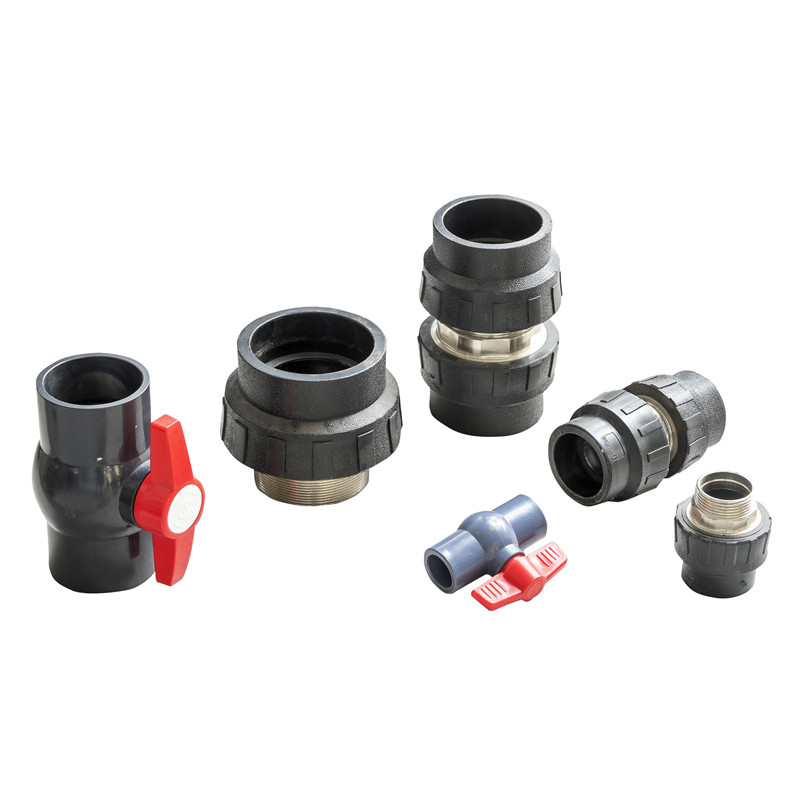Nov . 07, 2024 10:49 Back to list
Exploring Various Types of Water Pipe Fittings for Efficient Plumbing Solutions
Understanding Water Pipe Fittings A Comprehensive Guide
Water pipe fittings are an essential component of modern plumbing systems, playing a crucial role in the transportation of water in residential, commercial, and industrial applications. These fittings come in various shapes, sizes, and materials, each designed to serve a specific purpose in managing water flow and pressure. In this article, we will explore the different types of water pipe fittings, their functions, materials, and the importance of proper installation in plumbing systems.
Types of Water Pipe Fittings
1. Elbows These fittings are used to change the direction of the water flow. The most common angles for elbows are 90 degrees and 45 degrees, allowing for flexibility in routing pipes around obstacles.
2. Tees A tee fitting has three openings, allowing water to flow in three different directions. This is particularly useful for branching off a main pipeline to supply water to other areas.
3. Couplings Couplings are short fittings that allow two pipes to be joined together. They can be either close (to connect two pipes of the same diameter) or reducing (to connect pipes of different diameters).
4. Reducers These fittings are utilized to connect pipes of differing diameters, transitioning the water flow from a larger pipe to a smaller one or vice versa.
5. Caps and Plugs Caps are used to seal the end of a pipe, while plugs are inserted into the opening of a pipe to stop water flow. These fittings are essential for ensuring that plumbing systems can be temporarily or permanently closed off when necessary.
6. Unions Unions facilitate easy disconnection of pipes for maintenance. Unlike couplings, which require a complete disassembly of a pipeline, unions can be easily detached without disturbing the entire system.
Materials Used in Water Pipe Fittings
Water pipe fittings are available in a variety of materials, each with its own advantages and applications
water pipe fittings

- PVC (Polyvinyl Chloride) Popular in residential plumbing due to its affordability and resistance to corrosion. PVC fittings are lightweight and easy to install, making them a favorite for drainage and irrigation systems.
- CPVC (Chlorinated Polyvinyl Chloride) Similar to PVC but with a higher temperature resistance, making it suitable for hot water systems.
- Copper Known for its durability and longevity, copper fittings are commonly used in supply lines for both hot and cold water. They resist corrosion and have antibacterial properties, making them safe for drinking water applications.
- Brass Often used for fixtures and valves, brass fittings are resistant to corrosion and provide a strong, leak-proof seal.
- Stainless Steel This material is favored in industrial applications due to its strength and resistance to high temperatures and corrosive environments.
Importance of Proper Installation
The integrity of plumbing systems relies heavily on the proper installation of water pipe fittings. Incorrectly installed fittings can lead to leaks, reduced water pressure, and increased risk of water damage.
It is crucial to ensure that fittings are cleaned and prepared before installation, as dirt and debris can compromise the seal. Additionally, utilizing proper sealing techniques, such as using thread sealant tape on threaded connections, helps to prevent leaks.
Regular inspection and maintenance of fittings are also important for ensuring long-term performance. Detecting wear and tear early can save property owners from costly repairs and water damage.
Conclusion
Water pipe fittings are vital components that enable effective water management in various applications. By understanding the types, materials, and installation practices associated with these fittings, individuals can make informed decisions for their plumbing needs. Whether you are undertaking a DIY project or hiring a professional, ensuring that the right fittings are used and installed correctly will enhance the functionality and longevity of your plumbing system. Investing in quality materials and workmanship will ultimately provide peace of mind, knowing that your water supply is safe and reliable.
-
Durable PP Rigid Sheet: Lightweight, Chemical Resistant Solutions
NewsAug.21,2025
-
PVC Grey Sheet for Extraction: Chemical Resistant & Durable
NewsAug.19,2025
-
Durable PVC Pipe Fittings for Plumbing & Irrigation Needs
NewsAug.18,2025
-
HDPE Steel Belt Reinforced Spiral Corrugated Pipe | High Strength
NewsAug.17,2025
-
HDPE Pipe Fittings: Durable, Leak-Proof Solutions
NewsAug.16,2025
-
Premium CPVC Sheet: High-Temp & Chemical Resistant Solutions
NewsAug.15,2025

